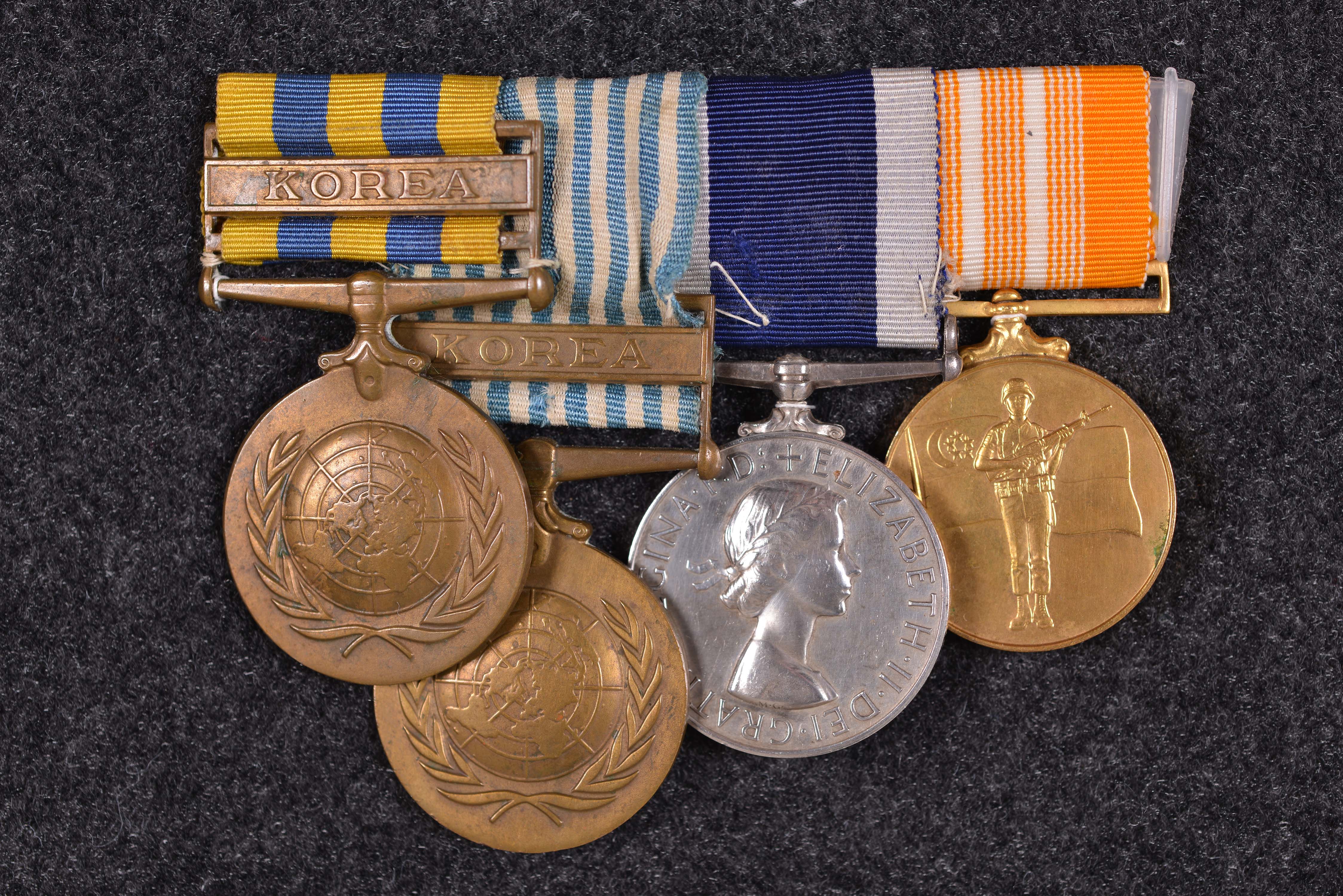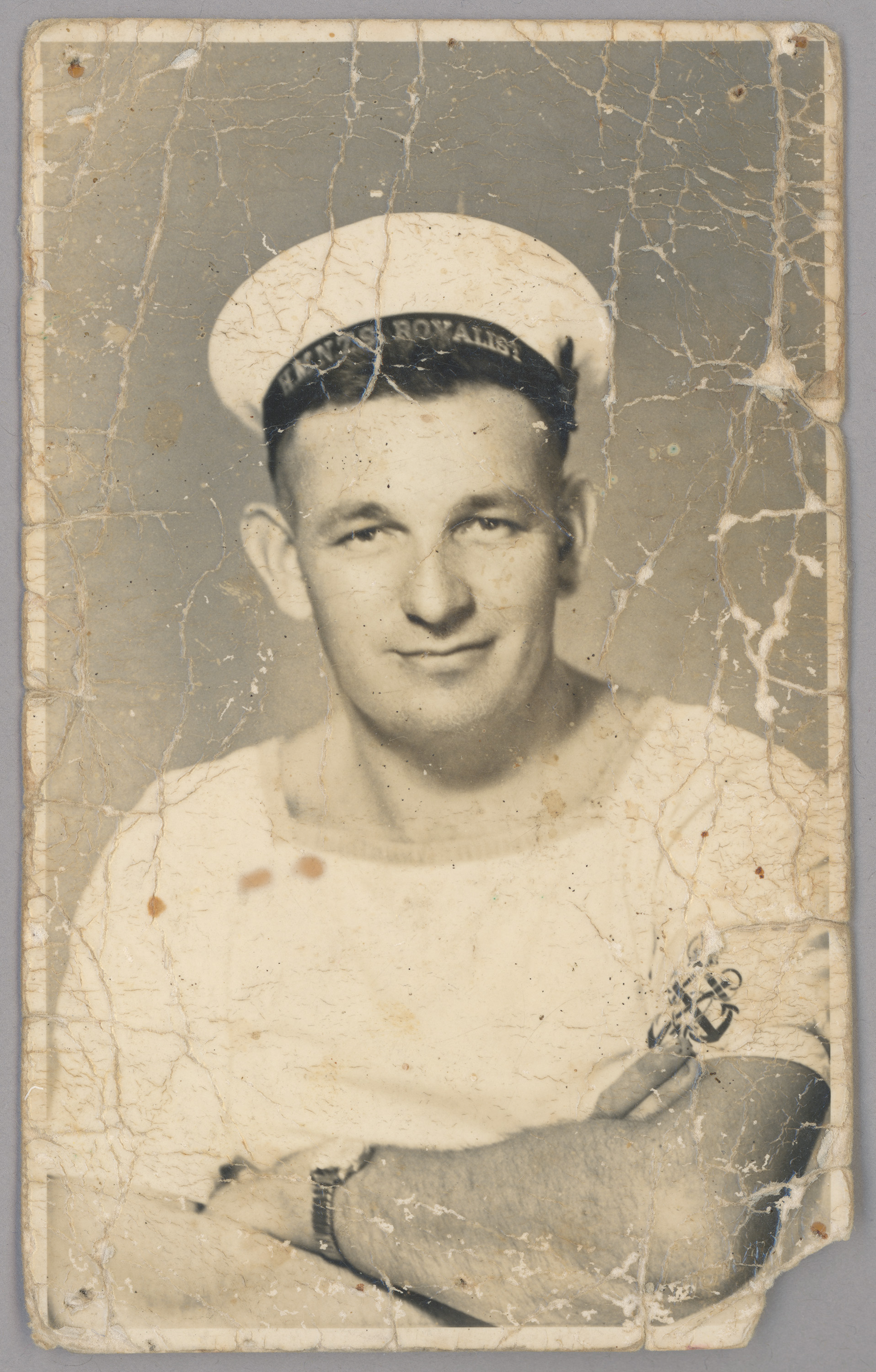

Display No. 10C
HURLEY, Percy George
Percy Hurley joined the Royal New Zealand Navy (RNZN) as a Stoker in September 1950, training in HMNZS Tamaki. During his service, Hurley served in numerous RNZN ships and in the shore establishments HMNZ Ships Philomel, Tamaki, and Wakefield. In 1951 he served at sea in HMNZS Kaniere which was employed patrolling the Pacific with visits to Apia, Ellice Islands, Rotuma, Suva, and Tonga. In 1953 he was serving on board HMNZS Black Prince when the ship gave aid and assistance to the people affected by the 1953 Ionian earthquake in Greece. Hurley then spent several years serving on the Far East Station in HMNZS Royalist which took part in operations in against Malayan terrorists, and also in HMNZS Rotoiti which was deployed to maintain the ceasefire from the Korean War. He was also on board Rotoiti during the ship’s service on Operation Deep Freeze in 1961-1962. In the late 1960s Hurley served several years in the survey ship HMNZS Lachlan. At the end of his time in the RNZN, Hurley was seconded to the Singaporean Navy as an instructor in basic mechanical engineering for which he was awarded the Singaporean Military Good Service Medal.
Note: Hurley’s Korea Medal ribbon does not match the United Nations Korea Medal that is attached to it.
, The 1914-1915 Star, United Nations Medal Korea, Royal Naval Long Service and Good Conduct Medal, Singapore Armed Forces Good Service Medal
Awarded medal(s)
Medal Description [Left to Right]:
The Korea Medal
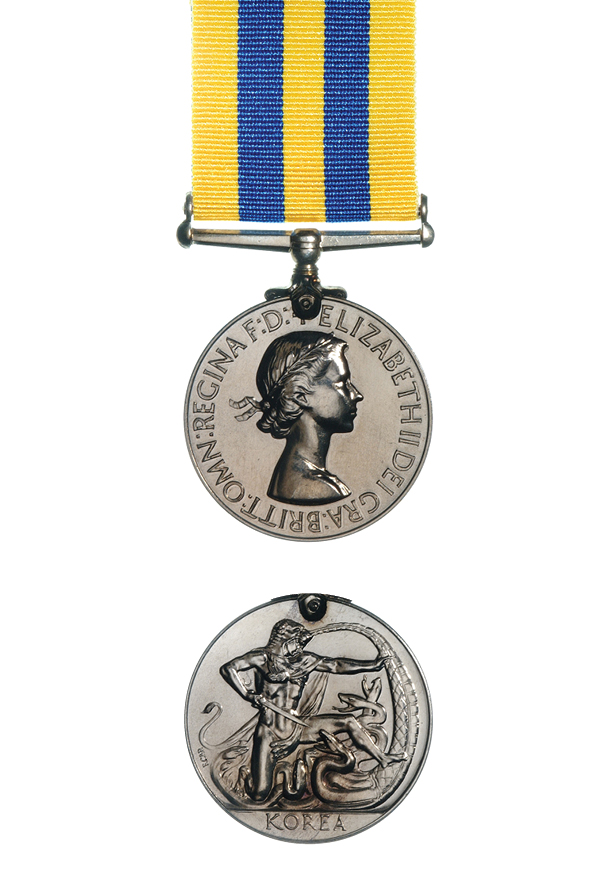
This medal was instituted in 1951, to recognise the service of Commonwealth troops in the Korean War between 2 July 1950 and 27 July 1953. It is sometimes referred to as the Queen’s Korea Medal to differentiate it from the United Nations Korea Medal. For naval forces, qualification is 28 days or more afloat in the operational area or at least one day of shore duty. The medal’s reverse features Hercules wrestling the Hydra – a symbolic representation of communism. The ribbon has alternating yellow and blue stripes. Blue represents the United Nations.
United Nations Medal Korea
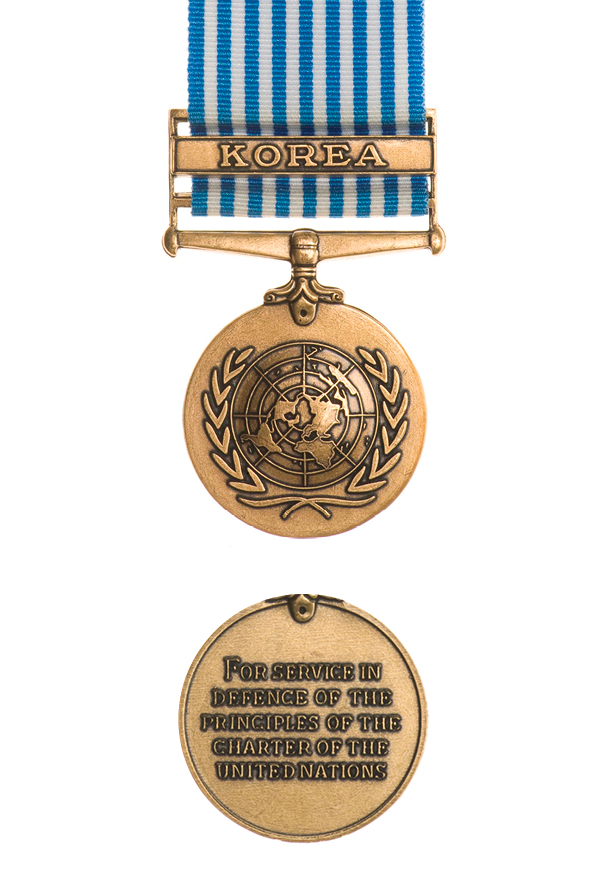
The United Nations Medal (Korea) was awarded for service during the Korean War and the year following the armistice (July 1950 to July 1954). It was the first international award created by the United Nations and features the UN emblem of a projection map of the world between two olive branches. The medal recognises the service of all military troops participating as part of the UN forces in Korea and was manufactured in the language of each country. It was also awarded to a limited range of civilians whose organisations were certified by the United Nations Commander-in-Chief as having directly supported military operations in Korea between 1950 and 1954.
Royal Naval Long Service and Good Conduct Medal
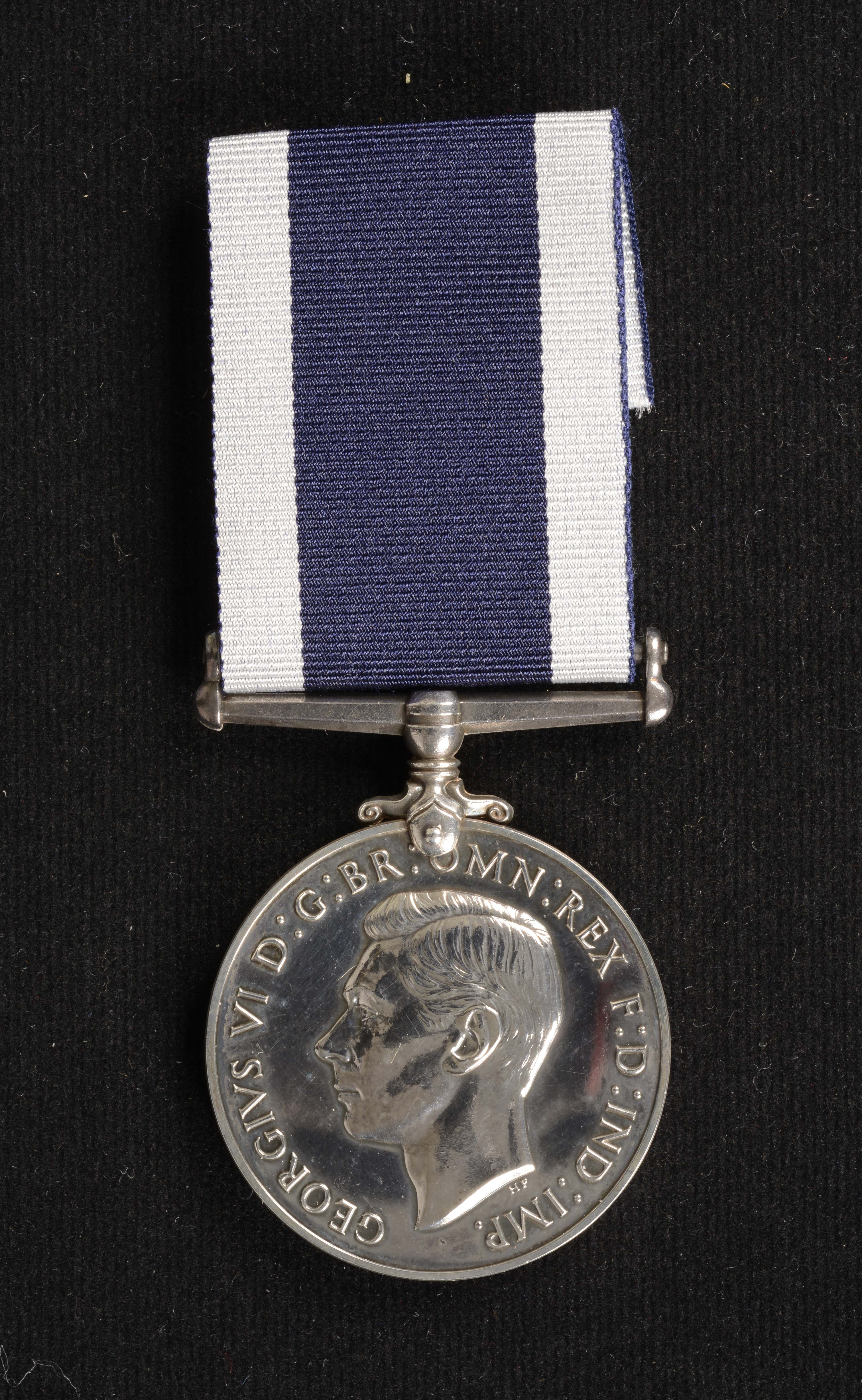
Awarded to ratings who have served a minimum of 15 years in the Royal Navy (previously 21 or 10 years), the first version of this medal was instituted in 1831 and it is still issued to Royal Navy personnel today. It features the reigning monarch’s head on the obverse and HMS Victory on the reverse with the recipient’s details engraved or impressed on the edge of the medal. This medal was also issued to eligible personnel serving in the New Zealand Division of the Royal Navy from 1921-1941 and then to Royal New Zealand Navy personnel from 1941-1981. In 1985 a New Zealand Royal Navy Long Service and Good Conduct Medal was introduced bearing the exact same design.
Singapore Armed Forces Good Service Medal
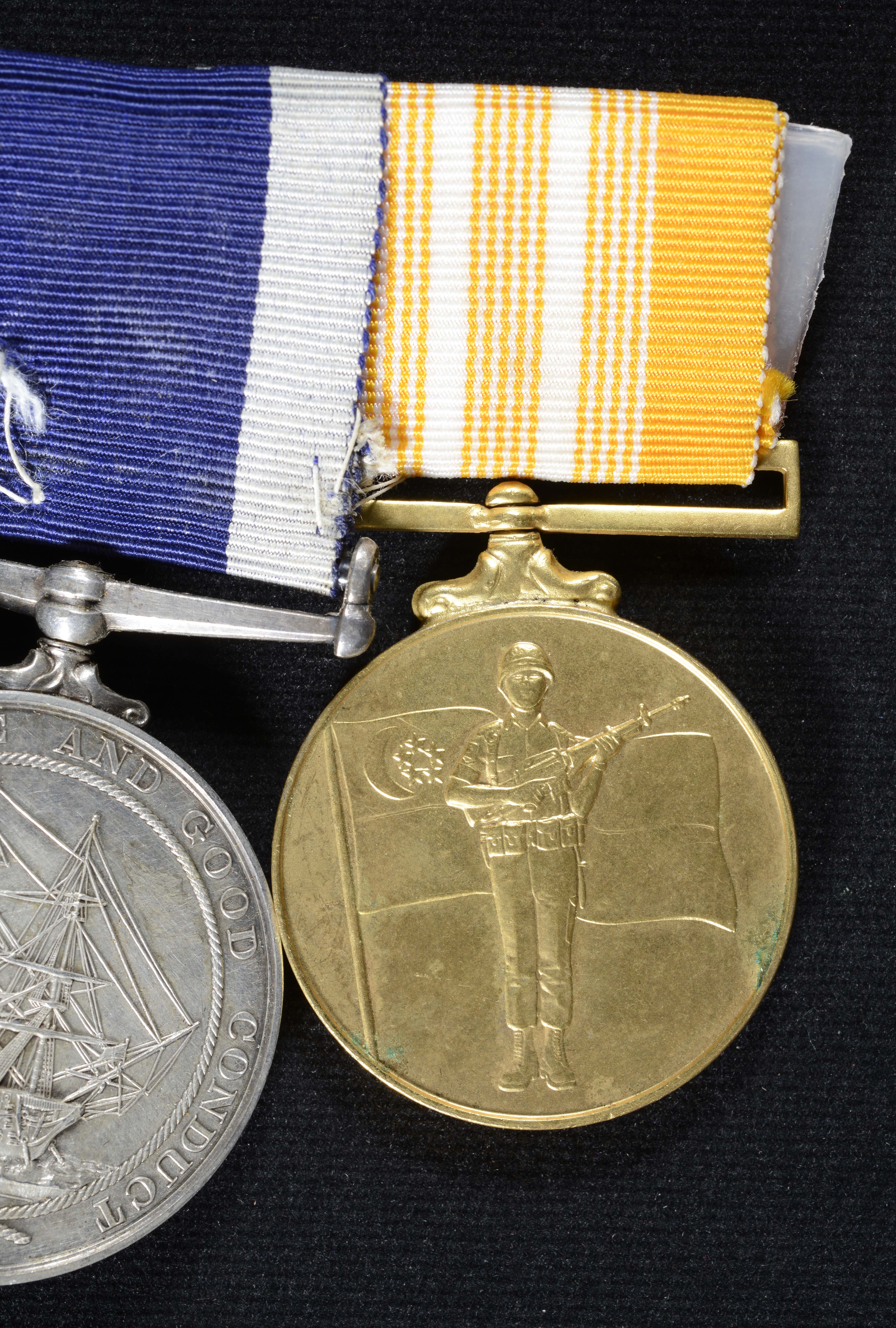
Awarded to a regular career soldier of the Singapore Armed Forces (SAF) who has satisfactorily completed 5 years of dedicated service.

